The Blog
Welcome to your video cast’s Sweet as Wedding a weekly interview for you with a professional from the wedding industry to ensure that your wedding will be perfect. With your host Anais Chaine Photography, an international photographer.
To listen to the whole interview, while you are driving, eating, chilling…click here!
Renee is a kiwi wine maker. Check out her website : www.moiwines.com
Anais: Hello
Renee: Thanks Anais
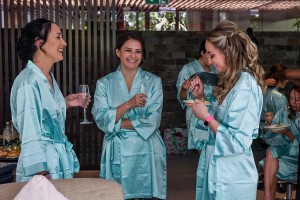 A: Your welcome. Can you tell us a little bit how did you get into the wine industry.
A: Your welcome. Can you tell us a little bit how did you get into the wine industry.
R: Sure. Well, I’ve basically been in the wine industry for about 10 years now.
A: That’s a long time.
R: Yeah. Earlier this year we had a 10-year high school reunion. So, straight out of high school I went into the Bachelor of Wine and Science where I studied in Hawkes Bay.
A: Okay. That’s a good area to study wine, isn’t it?
R: Very good one. Yes. It’s an amazing wine-growing region of New Zealand and there’s a lot of variety there.
« …Moment of Impact […] when you’ve got food and wine and the cohesion of flavors it’s just mind-blowing. »
A: Great. How long is the training? How long is the study?
R: You can do a 3-year Bachelor of Wine and Science, which is just wine making essentially. Or you could do a 4-year degree with Viticulture as well for those who want to get more into the growing side of grapes.
A: Ok, so three to four years.
R: Yep.
A: And how did you get to build MOI wine?
R: Right. So MOI was basically, it’s French for “you” “I” and you know that Anais.
A: I know that.
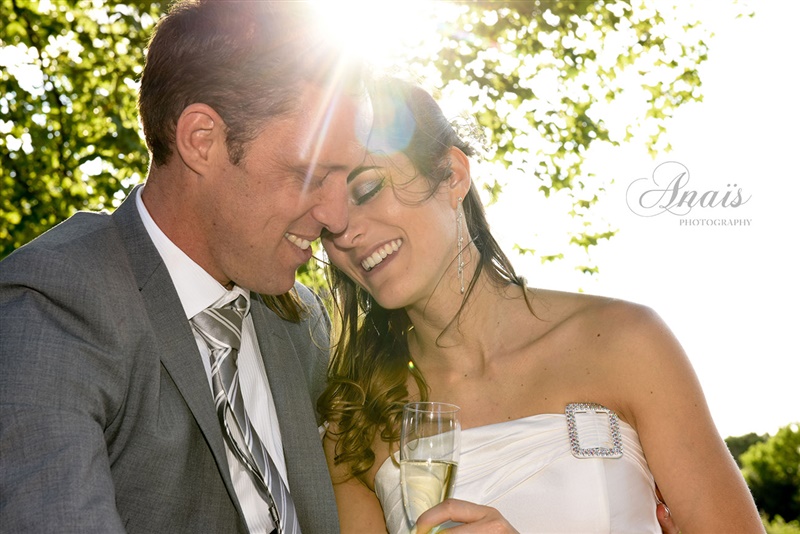 R: But also it’s an acronym for Moment of Impact. And that’s essentially how I want my wines to be. I want them to be a moment of impact for those who are drinking it. And they’re specifically made for pairing with food because in my experience that is the most amazing moment when you’ve got food and wine and the cohesion of flavours it’s just mind-blowing.
R: But also it’s an acronym for Moment of Impact. And that’s essentially how I want my wines to be. I want them to be a moment of impact for those who are drinking it. And they’re specifically made for pairing with food because in my experience that is the most amazing moment when you’ve got food and wine and the cohesion of flavours it’s just mind-blowing.
A: So that’s your job to pick those wines that really bring you to that moment of impact.
R: Essentially, yes. It’s made in one season and in a year later you’re supposed to work out how it’s going to taste and it’s pretty amazing little adventure to.
A: Yeah and you never know or you sort of guess that’s going to be right but there are so many variations.
R: So many variations from climate obviously, from the weather pattern that season. The soil is probably the biggest variation or variable. And then you’ve got different grape varieties and how they work in that specific micro climate will give you completely different flavours.
A: Yeah, that’s a good adventure. I like « moments of impact » because it remains how much in weddings you’ve got all these highlights all throughout the day. The wine is definitely one of this, what you will be drinking.
R: I think so, yeah. It depends on the couple obviously but I think the wine can really make a wedding memorable.
A: Yeah. That’s a good insight. What advice then would you give to couples who are going to pick the wine?
R: Right. For so many people it can be a little bit scary trying to tackle that in terms of getting the right wine for their wedding. But, it doesn’t have to be. In my experience everyone has a family member or a friend who’s involved in the wine industry to some degree whether that’s in retail or making or growing for instance. And I think it’s really important to reach out to them and ask for their advice.
A: Some wine professional that you know.
R: Yes. And they tend to know the couple a little bit more intimately than some stranger for instance. And if you don’t know someone who’s in the wine industry then what can be really fun is to just go out and explore a little bit and get your friends involved with tasting the wine and make the best out of it.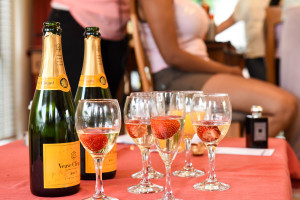
A: Okay, yeah bring some friends and family and pick up different bottles.
R: Yeah, I think so. Try and stick within your budget. But at the end of the day, it is up to the couples and their decision. So don’t let your rich Uncle Bob convince you to blow your budget on some expensive bottle if you don’t happen to like it.
A: Okay. That’s good. So walk with your personality, your taste, everything. In terms of budget and quantity, what amount would you recommend?
R: That’s tricky. That sort of depends on how big the glass is obviously but they tend to say that a bottle of wine, 750ml, can serve between 4-6 glasses. And obviously, a white wine glass compared to a red wine glass they’re slightly different sizes so you want to work with the caterer on that one I think. They tend to know through experience how much to pour into a glass. You don’t want your customers or your friends to think that you’re short-changing them with your wine.
A: So would you recommend to get a smaller glass?
R: That could be one way of getting around it, yeah.
« …there are so many wines out there […] you’ve got such a big variety and if you can write down your budget first and then you can explore… »
A: Okay. And the budget, if you got a really low budget for drinks and wine, what’s…
R: a way to get around it?
A: Yeah
R: Well, there are so many wines out there and we’ve got, you know, wines that are six dollars through to, I don’t know, hundreds of dollars, really. But, you’ve got such a big variety and if you can write down your budget first and then you can explore that so you could if you’ve got a very limited budget. You could do something quite special like buying cheap sort of unlabeled wine and then personalizing it. There are companies out there who do personalized labels.
A: Oh wow, that would be nice.
R: So you can have cute little you know
A: like bottles?
R: for the bride and groom, yeah.
A: That sounds like really fun and good idea. I like that.
R: I like that too and I think that’s one way of making the wine, well it’s not the most, you know, flashy wine, it can be still really really memorable.
A: Okay, cool. So what would you absolutely avoid for the wine of your wedding?
R: Well, I speak through experience with this one. My sister got married and we had the caterers served the wine and they opened every single bottle without actually serving all of the bottles. So we had an excess left-over after the wedding of all of these bottles that we could have potentially sold back to where we bought them but they were all open.
A: Okay, the need to finish all the bottles.
R: Yeah. It took us like a good two years, I think, to finish.
A: Oh no.
R: Yeah, it was crazy. But I’d definitely recommend to open them as they pour the wine.
A: Okay, right. And does it affect the flavour as well to open them much before?
R: Yeah. Usually with weddings you don’t tend to get the really expensive vintage wines that have corks in them. Those wines really need to be opened and as you say, they need to breathe a little bit before serving but usually at weddings there are screw caps and you don’t really need to let them breathe before you serve them.
A: And so what do you mean by vintage bottle? What is a vintage bottle?
R: In that respect I was meaning sort of an older specifically from a year. So a bottle, sort of 1986 you’d probably want to open that and let it breathe before you drink it.
A: Okay, so that’s what vintage is.
R: Yes
« …a retailer will really be able to help you there with what’s a good year or a good vintage wine. »
A: And, when you go to the wine maker or retail store, will they be able to point out a vintage bottle?
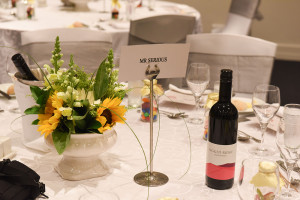 R: Yeah. We have a lot of keen interest in wine in this country and a retailer will really be able to help you there with what’s a good year or a good vintage wine.
R: Yeah. We have a lot of keen interest in wine in this country and a retailer will really be able to help you there with what’s a good year or a good vintage wine.
A: Okay, that’s good. That’s good to know. So let’s get deeper into that. What’s the way to pick up the right wine for example?
R: It really depends on what kind of food you are serving. So some people like to serve buffet food or they do their own sort of garden wedding that’s more of a canapé type. So you really want to work quite closely with your caterer with that. But there are a range of wines that sort of you’ve got your light that tend to go well with seafood in terms of a red wine. They can also work really well with duck and lighter meats. But then you’ve got your big Cabernet Sauvignon and your own kind of wines.
A: Yes it’s so personal.
R: Yeah. So I think it’s really important to work with the food when you are choosing a wine.
A: Ok, so what stronger wine would match with what food?
R: Yes, so when you are matching food with wine, there’s rules but then there’s also rules there to break. So, generally you’ve got food that are sort of have an umami flavour to it, which is that savoury kind of flavour. You don’t want to match them with a big tannic red wine that tends to bring out the tannins more. Whereas if we have some food that’s salty it can actually help reduce the tannins in the red wine so it just depends because often salty and umami go together. So you really do need to taste the wine with the food.
A: Okay. So would you recommend to do the testing while you are out here having the same food for your wedding day?
R: Yeah. You can do that. You can work closely with your chef as well on what they’re planning on serving. Often they will actually go through that with you.
« White wine can be quite a lot of fun. »
A: Okay, that’s a good suggestion. What about white wine? Any specific?
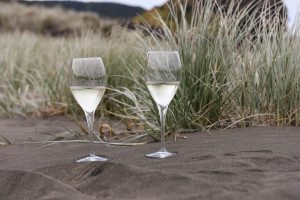 R: White wine can be quite a lot of fun. There’s nothing really specific. It’s just again you really want to work closely with the food that you are serving. But often that’s served as an aperitif so even if you’re not gonna be serving it with food, you can branch out into other varieties. You can do Reisling which can be quite refreshing on a hot day. Your guests are waiting around or you could do something a little bit different. You could serve a sherry. That can be quite nice to serve.
R: White wine can be quite a lot of fun. There’s nothing really specific. It’s just again you really want to work closely with the food that you are serving. But often that’s served as an aperitif so even if you’re not gonna be serving it with food, you can branch out into other varieties. You can do Reisling which can be quite refreshing on a hot day. Your guests are waiting around or you could do something a little bit different. You could serve a sherry. That can be quite nice to serve.
A: Sort of a port?? Is it?
R: A sherry is basically like port but it’s made with white grapes and you get more of an oxidized almondy character with them.
A: That’s really nice and refreshing.
R: It is. It’s delicious.
A: And what about the percent like if it’s too strong because you don’t want to get all your guests drunk.
R: Probably not. I think with the sherry you would probably want to do that with close family or maybe not at lunch weddings because you don’t want your guest falling over before you get them to serve food.
A: Maybe you just make sure you get them a new wine glass.
R: Yeah. There’s also in terms of weddings, sparkling wines are the most iconic wine, I guess.
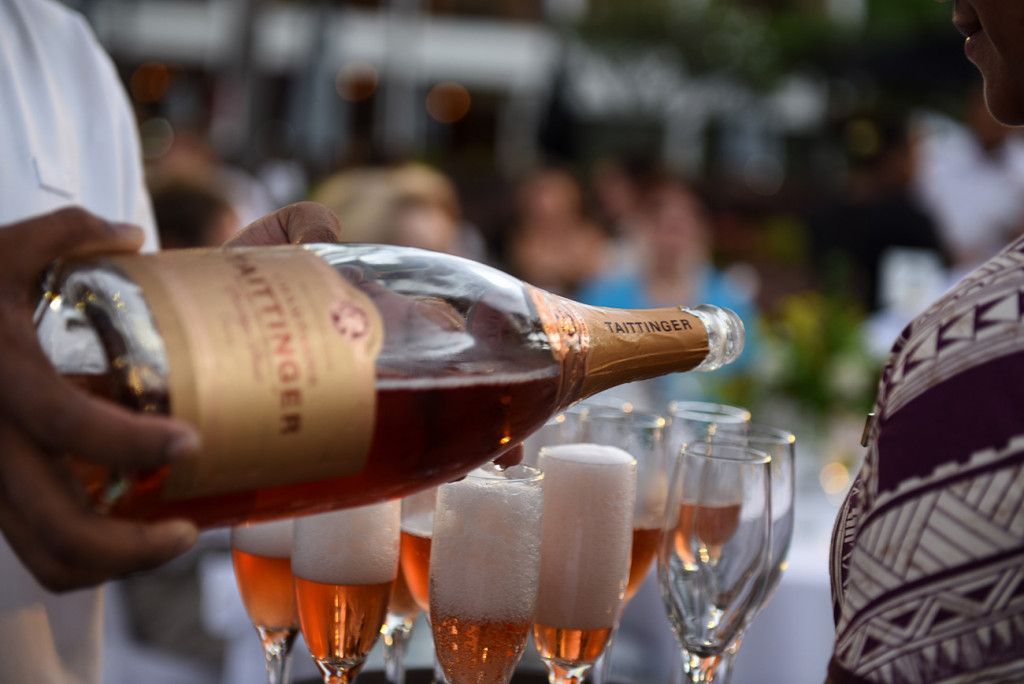 A: Yeah they’re bubbly, of course.
A: Yeah they’re bubbly, of course.
R: If you don’t have a large budget you can actually go to a different type of sparkling wine as opposed to champagne. You can possibly purchase a Prosecco, which is a sparkling wine made in Northern Italy. They are so refreshing and delicious. I could easily drink a bottle by myself. And they’re usually really good quality and good price range as well.
A: Yeah, Italian wine can be really affordable.
R: Really affordable.
A: Next to champagne which is quite fancy.
R: Exactly, yeah.
« In my personal opinion, the bride and groom’s table can drink whatever they like. »
A: And do you think that could be correct for the table, the wedding, the bride and groom party to get the champagne bottle and maybe offer a nice bubbly Italian bubbly to the guests?
R: Yeah. In my personal opinion, the bride and groom’s table can drink whatever they like. I would do that. I would have a nice champagne for the bride and groom and then if you have a limited budget, maybe Prosecco for the rest of them.
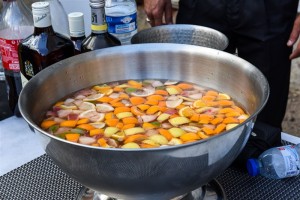 A: So treat yourself for your wedding.
A: So treat yourself for your wedding.
R: Yeah, I would say so.
A: That’s a good thing. So do you have any other advice for other beverage such as non-alcoholic or beers, sodas?
R: I think sodas can be touch and go a little bit. You really want to do some investigation so definitely do some tasting before you serve it. You’ve got such a range of different styles that you’re not really sure what you’re serving all the time. Beers, again I think that’s really important to have them – a non-wine option because some people can be allergic to sulphides and things like that. I’d definitely look to your caterer for that because they can often get some really good deals for you. And in terms of non-alcoholic, I think it’s really important to have a non-alcoholic option but not necessarily just orange juice. You can get a little bit creative with your sparkling water and do some sort of elderflower infused sparkling water, things like that. But again, talk to your caterer.
A: Because they can suggest some original ideas?
R: Yeah.
« Also, as women, we love to wear perfume […]. But, that’s something that you want to avoid when you are going into wine tasting. […] the people around you that gets disturbed by it. »
A: Well that’s a lot of good information you gave us. Thank you so much. Maybe to finish, could you explain to us how to process for wine tasting? How to get ready for that?
R: Yeah. Sure. It’s really important, first of all, not to turn up to your wine tasting chewing gum. So this is definitely something to avoid. That’s the wine maker’s worst enemy. Also, brushing your teeth, you can almost just not do that. We’ll forgive you for having morning breath. It’s much better to avoid brushing teeth. If you do brush your teeth in the morning, then you can cleanse your palette with some crackers or some bread or something like that.
A: That will neutralize your mouth.
R: Yes. Actually that’s what I tend to do in the morning is actually brush my teeth and then have breakfast. And sort of the opposite way around but that way when I get to work and do some wine tasting it doesn’t change the flavour. Also, as women, we love to wear perfume and that’s why I love my weekends and my days off because I actually get to wear it. But, that’s something that you want to avoid when you are going into wine tasting.
A: That can sort of disturb your senses.
R: Definitely. And even if it’s not your senses, it’s the people around you that gets disturbed by it.
A: So, no perfumes.
R: Body lotion, perfumes, avoid it if you can. Wine tasting can be a lot of fun.
A: They are for sure.
« When you taste food and wine, you’re actually volatilizing the flavors in it. It’s basically sent up to the back of your nose and […] they tend to bring out memories. »
R: We’ve got here a 2012 Cabernet Franc, which is a variety that is often blended away into Cabernet Sauvignon or Bordeaux blends and I think that’s really sad because it’s such an amazing variety by itself. So I made one in 2012 and we’re going to taste it today.
A: And you have the MOI label.
R: So you really want clean glasses. That’s kind of key as well. You don’t want too much wine in your glass when you’re tasting it but you need enough to sort of create a good aroma. First of all you want to look at the color. And it’s quite a light color and the best way to find the color is at the rim and holding it behind something white actually helps as well. And then you swirl it. I’m so used to doing wine tasting that I’m often swirling water in my wine glass by accident. Try not to get too vigorous because you might splash the person next to you. Basically it just releases the aromas and the flavors so that when you put your nose in *-sniff-*
A: We can smell it from here.
R: Yeah. Let’s talk about the shape of the glass. Obviously a wine glass is shaped like a tulip and that just helps concentrate the aromas on the top of the glass. When you taste food and wine, you’re actually volatilizing the flavours in it. It’s basically sent up to the back of your nose and there’s a little olfactory system there, some glands that connect directly to your brain so flavors, aromas, they tend to bring out memories. If you are smelling a red wine and you think “Oh, this reminds me of that holiday that I took where we were cutting up wood or whatever.” It is a memory association.
A: That is so interesting. That’s very possible to have fun. Memory by just smelling it or?
R: Yeah, definitely. When you’re actually tasting it in your mouth as well, a lot of those flavours are basically warmed up. They become volatile and they trigger the same gland behind your nose.
A: So, I can smell forest and mushrooms.
R: What kind of holiday was that?
A: Probably in autumn when I used to go and pick up mushrooms.
R: Cabernet Franc tends to have some really fruity aromas as well. I get a little bit of blueberries and a little bit of vanilla as well.
A: I don’t really get the vanilla but I got the blueberry.
R: So when you’re tasting the wine, you do want to breathe a little bit of air through the wine so it does sound a little bit messy but it’s quite important to basically aerate and volatilize those flavors so you can get more out of it. Also with the red wine, I tend to sort of chew the wine as well and that covers the entire palate with the wine and it helps me get as much information as I can out of it instead of just down the gullet.
A: I will watch you doing it.
R: Okay. (Drank wine and started ‘chewing’ it)
A: Okay, my turn.
R: It takes practice sometimes.
A: (Drank the wine) I think I drank a bit too fast.
R: That’s okay. It does take a bit of practice. It’s hard when it tastes so good, isn’t it?
A: It is delicious, yeah.
R: So that’s a nice, light, quite flavorful you can still taste it. Now, it’s still going. It’s got a lot of return to the palate.
A: Yeah, it is.
R: In some nice tannins there are so…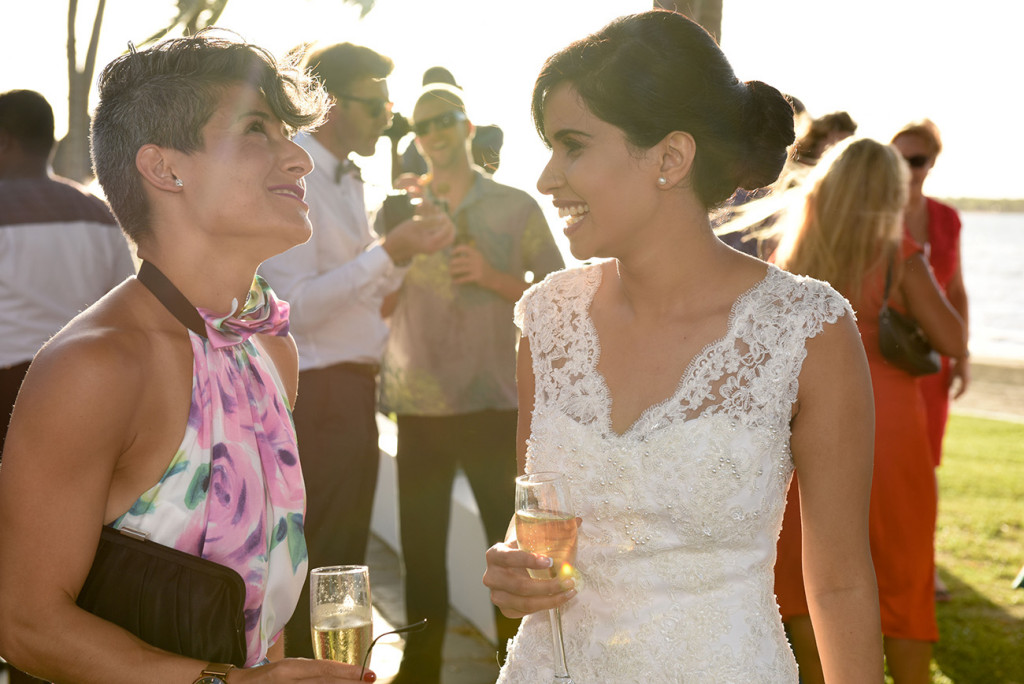
A: Why is the orange and chocolate there?
R: When you are matching food with wine, it’s really important to think what are the dominant flavors of the food that we’re serving. With an orange, for instance, the dominant 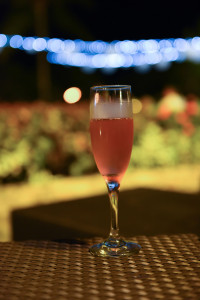 flavour/ taste there would be acid. So if you were to pair an orange with this red wine, it would significantly change the red wine. If this wine was a highly acidic wine, you’d want to pair it with an acidic food because it makes the wine seem less acidic.
flavour/ taste there would be acid. So if you were to pair an orange with this red wine, it would significantly change the red wine. If this wine was a highly acidic wine, you’d want to pair it with an acidic food because it makes the wine seem less acidic.
A: That makes sense.
R: Then if you were to try pairing it with chocolate, the dominant flavor there is let’s just say sweetness as there’s a lot of sugar there. If you are pairing it with a sweet wine, it wouldn’t seem so sweet. So you kind of want to marry the same flavours there. If the wine was highly tannic by itself, then you wouldn’t want to put chocolate with it because it would make it even more tannic and drying. In that instance, something like a salty kind of food can actually reduce that tannic dryness of the red wine. The difficulty with that is that often salt is associated with sort of savoury umami characters and that umami flavour can sometimes make the wine more tannic. In those instances again, it’s really important to try the food with the wine that you’re thinking of serving.
A: Yeah, to make the right match.
R: Exactly.
« There’s very limited product there but I’m more than happy to extend my “Moi Exclusive” friends deal to your customers. »
A: We’ll definitely follow your instructions. Thank you so much and just before we finish you said you had a little special offer for the viewers of the videocast.
R: So, with my wines MOI, it’s a Limited Edition single vineyard wine. There’s very limited product there but I’m more than happy to extend my “Moi Exclusive” friends deal to your customers.
A: Wow. That’s really good.
R: Basically, I’ll be selling it to them at wholesale price. It’s a pretty good deal.
A: That’s a great offer. How can they get access to that?
R: If they email me with the name of the production, which is
A: Sweet as Wedding
R: Yes. Sweet as Wedding then I will add them to the VIP friends list.
A: Okay great! So I will add your contact detail which is your email address to the show notes and you can email Renee and say Sweet as Wedding and sign me up. Thank you so much Renee!
R: Thank you. Cheers Anais!
Laisser un commentaire Annuler la réponse
-
Articles récents
- A Dream Wedding in Paradise: Eva & Rene’s Intimate Celebration at Savasi Island Resort mars 25, 2025
- Shane & Camila’s Vow Renewal at Plantation Island Resort | A Decade of Love février 18, 2025
- Elopement Bliss at Malamala Beach Club | Katrina & Kyle’s Intimate Fijian Wedding février 17, 2025
- A Magical Wedding at Hilton Denarau, Fiji – Stefanie & Nicholas’ Intimate Celebration février 11, 2025
- A Love Story Rooted in History: Celebrating a Wedding at Balaga janvier 13, 2025
- Love in Paradise: Kelly and Rob’s Dream Elopement at Lomani Island Resort, Fiji décembre 17, 2024
- A Heartfelt Celebration: Tyla and Callum’s Wedding at Plantation Island Resort novembre 17, 2024
- A Beautiful Renewal of Vows at Vomo Island Resort octobre 20, 2024
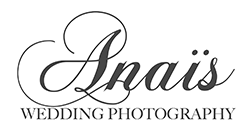
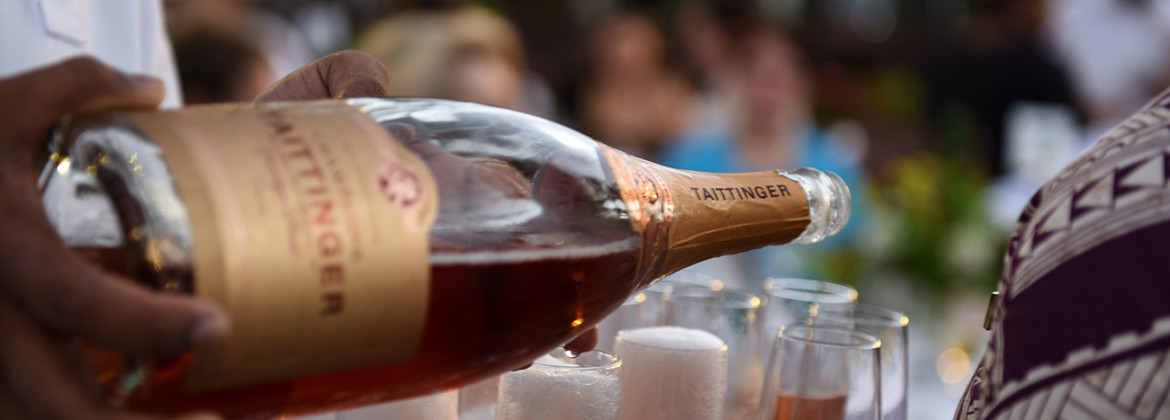
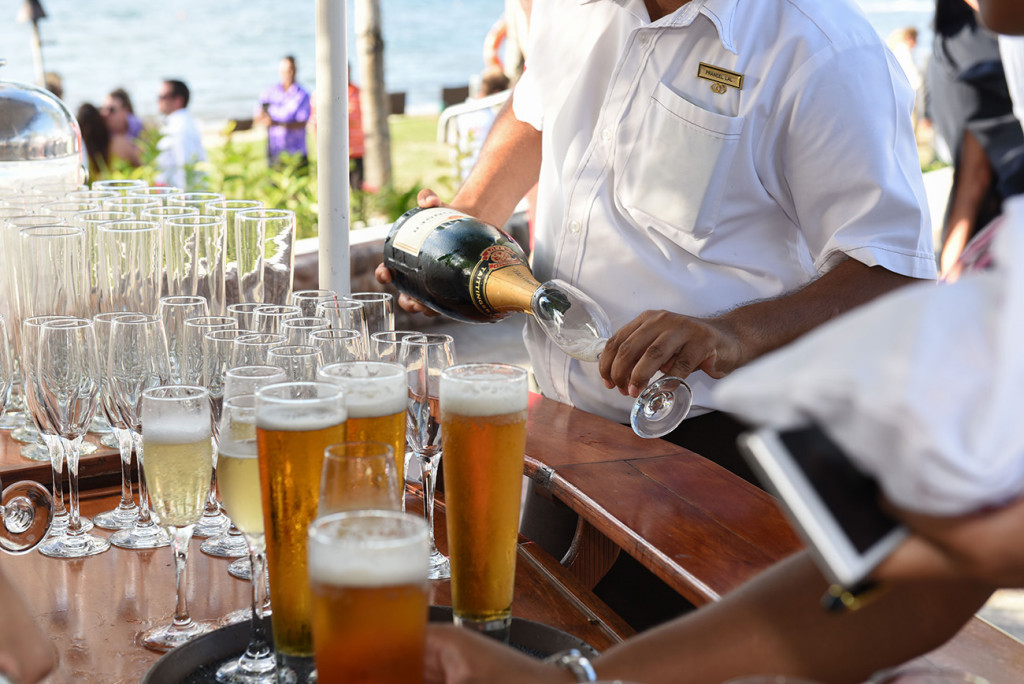








Share On